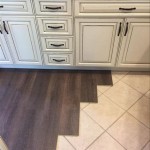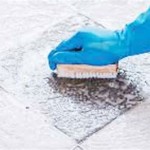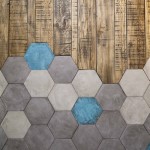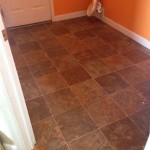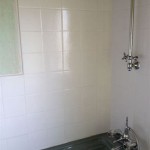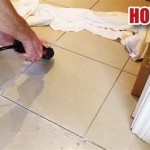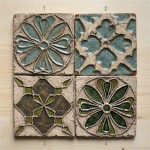Can You Put Tile on Waterproof Drywall? A Detailed Guide
The question of whether tile can be installed directly onto waterproof drywall is a common one, particularly in areas prone to moisture, such as bathrooms, kitchens, and laundry rooms. While waterproof drywall, often referred to as moisture-resistant or water-resistant drywall, offers enhanced protection against water damage compared to standard drywall, the suitability for tiling requires careful consideration. Understanding the properties of both the drywall and the tile, along with the appropriate installation techniques, is crucial for achieving a durable and long-lasting tiled surface.
Waterproof drywall is typically manufactured with a water-resistant core and a specially treated paper facing. This construction helps to repel moisture and inhibit mold growth, making it a popular choice for areas exposed to humidity and splashes. However, it is important to distinguish between waterproof and completely impervious. While waterproof drywall resists water penetration, it is not designed to withstand constant or prolonged exposure to standing water. Furthermore, the seams and fasteners used in the installation process can still be vulnerable to moisture if not properly sealed.
The primary concern when tiling over any substrate, including waterproof drywall, is ensuring adequate adhesion. Tile installations rely on a strong bond between the tile, the thin-set mortar, and the substrate. Movement, moisture, and inadequate preparation can compromise this bond, leading to cracked tiles, loose grout, and ultimately, tile failure. Therefore, assessing the specific conditions of the installation environment, the type of tile being used, and the chosen adhesive are all critical factors in determining the suitability of waterproof drywall as a tile substrate.
Key Point 1: Understanding Waterproof Drywall Limitations
The term "waterproof drywall" can be misleading. While these products offer increased resistance to moisture compared to standard drywall, they are not inherently impervious to water. Prolonged exposure to standing water or constant dampness can still compromise the integrity of the drywall, potentially leading to swelling, softening, and mold growth. This is particularly true at seams and fastener locations. The effectiveness of waterproof drywall is dependent on proper installation, including sealing seams and using appropriate moisture-resistant fasteners.
When considering tiling over waterproof drywall, it is essential to recognize its limitations as a substrate. Drywall, regardless of its water resistance, is inherently more flexible than cement board or concrete. This flexibility can be problematic in tile installations, as movement in the substrate can stress the tile and grout, leading to cracks and debonding. Larger format tiles, which are becoming increasingly popular, are particularly susceptible to this type of stress due to their increased weight and reduced flexibility. Therefore, careful consideration must be given to the weight and size of the tile, as well as the expected level of moisture exposure, when evaluating the suitability of waterproof drywall.
Furthermore, the paper facing of waterproof drywall, while treated to resist moisture, can still degrade over time if exposed to excessive humidity or direct water contact. This degradation can weaken the bond between the drywall and the thin-set mortar, leading to tile failure. It is crucial to ensure that the drywall is properly primed and sealed before tiling to prevent moisture from penetrating the paper facing and compromising the adhesion of the tile.
Key Point 2: Preparation and Installation Best Practices
Proper preparation is paramount when tiling over waterproof drywall. This includes ensuring that the drywall is securely fastened to the studs with appropriate moisture-resistant screws at the recommended spacing. All seams and fastener locations should be taped and mudded with a moisture-resistant joint compound. It is also crucial to allow the joint compound to dry completely before proceeding with any further steps.
Priming the waterproof drywall is an essential step that should not be overlooked. A high-quality primer designed for use in wet areas will help to seal the surface of the drywall, preventing moisture penetration and improving the adhesion of the thin-set mortar. The primer should be applied according to the manufacturer's instructions, ensuring thorough coverage of the entire surface to be tiled. Multiple coats may be necessary in areas with high moisture exposure.
Choosing the appropriate thin-set mortar is equally critical. A modified thin-set mortar specifically designed for use with moisture-sensitive substrates should be used. These mortars typically contain polymers that enhance adhesion and flexibility, helping to accommodate movement in the drywall and prevent cracking. The thin-set mortar should be mixed according to the manufacturer's instructions, and applied evenly to the drywall using the appropriate notched trowel. It is essential to use the correct trowel size to ensure adequate coverage and bond between the tile and the substrate.
Grouting is another crucial step in the tile installation process. Selecting a high-quality grout that is resistant to water and stains is essential for preventing moisture penetration and maintaining the appearance of the tiled surface. Epoxy grout is often recommended for wet areas, as it is highly resistant to water, chemicals, and stains. The grout should be applied according to the manufacturer's instructions, and any excess grout should be removed promptly to prevent staining of the tile.
Key Point 3: Considering Alternatives and Supplemental Measures
While tiling directly over waterproof drywall is possible in certain situations, it is often advisable to consider alternative substrates or supplemental measures to enhance the durability and longevity of the tile installation. Cement board, also known as concrete backer board, is a superior substrate for tile installations, particularly in wet areas. Cement board is highly resistant to water damage, does not support mold growth, and provides a more stable and rigid surface for tiling than drywall. Installing cement board over the waterproof drywall can provide an extra layer of protection and improve the overall performance of the tile installation.
Another option is to use a waterproofing membrane over the waterproof drywall. These membranes are typically applied as a liquid or sheet and provide a continuous, waterproof barrier that prevents moisture from penetrating the drywall. Waterproofing membranes can significantly enhance the water resistance of the wall assembly and are particularly beneficial in areas that are frequently exposed to water, such as shower walls and floors.
Proper ventilation is also crucial for maintaining the longevity of any tile installation in a wet area. Ensuring adequate ventilation in bathrooms and kitchens helps to reduce humidity levels, preventing moisture from accumulating on the walls and ceilings. Exhaust fans should be used during and after showering or bathing to remove excess moisture from the air. Regular cleaning and maintenance of the tiled surface are also essential for preventing the buildup of soap scum, mildew, and other contaminants that can damage the grout and tile.
When evaluating whether to tile over waterproof drywall, it is essential to consider the specific conditions of the installation environment, the type of tile being used, and the long-term expectations for the tiled surface. Consulting with a qualified tile installer or contractor can provide valuable insights and recommendations based on the specific requirements of the project. They can assess the structural integrity of the wall assembly, evaluate the suitability of the drywall as a substrate, and recommend the appropriate installation techniques and materials to ensure a durable and long-lasting tile installation.
In summary, while tiling over waterproof drywall is possible with proper preparation and installation techniques, it is essential to understand the limitations of the drywall as a substrate and to consider alternative materials or supplemental measures to enhance the water resistance and durability of the tile installation. Careful planning, meticulous execution, and ongoing maintenance are crucial for achieving a successful and long-lasting tiled surface in wet areas.

Tile Over Drywall Showers A Common But Bad Practice Scott Hall Remodeling
What Happens If You Tile Over Drywall In A Shower Quora

Can You Tile Over Drywall Master Building Materials Blog

Waterproof Bathtub Shower Walls Over Drywall

Can You Tile Over Drywall Master Building Materials Blog
One Room Challenge Guest Bathroom Week 4 Lone Oak Design Co

6 Bad Ways To Build A Shower What Not Do Diytileguy

Waterproof Bathtub Shower Walls Over Drywall

Can You Tile Over Drywall Must See

Greenboard Drywall What You Should Know Modernize
Related Posts


